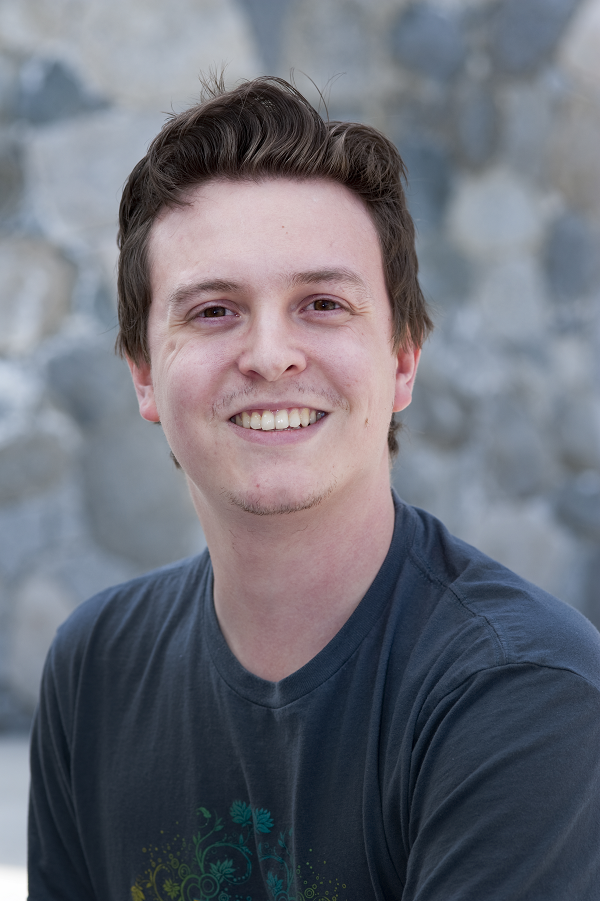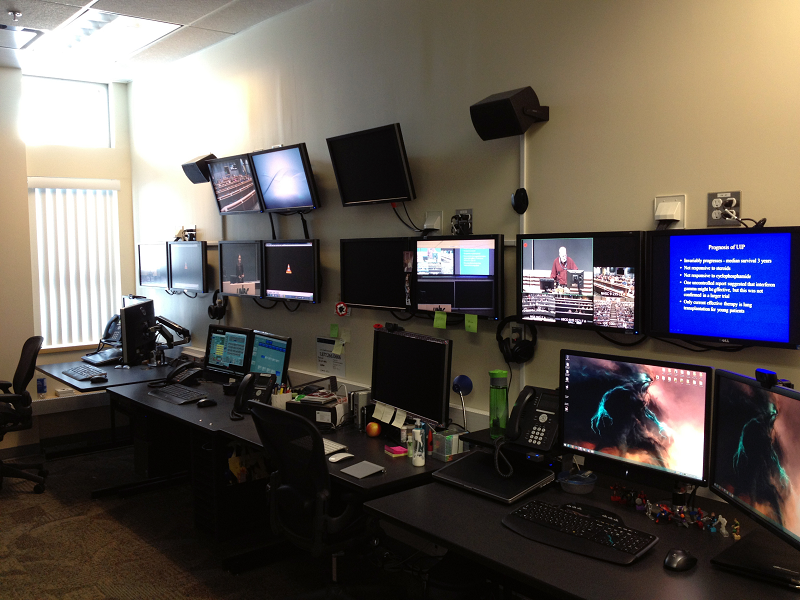It takes Matt Buchi eight minutes to drive to work in the morning – twelve if the traffic lights are against him.
Aside from the commute, there is no “typical day” for Matt, an Audio Visual (AV) Technician for the Northern Medical Program at the University of Northern British Columbia in Prince George. Matt shapes his day around the needs of faculty, staff and students – as do the other technical staff who directly support the complex systems that enable the Distributed Medical Program to operate successfully.

Matt Buchi, AV Technician
for the Northern Medical Program
The early mornings result from the preparation that goes into making videoconference sessions run smoothly. The team plans their day backward, from the first scheduled session. Thirty minutes to an hour is allocated prior to the session for a “flash-up.” During a flash-up, a technician from each connecting site tests all the resources that are scheduled to be used to ensure that the presenter and participants aren’t surprised by any difficulties. This includes videoconference resources, such as the monitors, the microphones, and the cameras, as well as resources that have been specifically requested, such as DVD players or Audience Response Systems.
Before the flash-up, each videoconference-enabled room undergoes “local testing.” During local testing, Matt turns on each piece of equipment in the room and checks for potential maintenance issues that would cause problems during a flash-up.
After the session starts, Matt will return to the Central Technician Office (CTO) where he faces a wall of thirteen monitors. Typically, two of those screens allow him to monitor what is happening in the session, but he’ll use four if the presenter is at his site. While the session runs, Matt will listen to the audio and work on other tasks on two more screens that are connected to his PC.
“We multitask a lot here,” Matt laughs. “Most of the time I phase out what they’re saying and listen for key words. Sometimes a lecture will peak my interest because I know someone who has the disease or illness, so I start watching… It might drive some people crazy, because there’s all this audio constantly around you. But I’ve always been pretty good at that.”
Matt jokingly likens the role of support to that of a superhero:
“If something were to fail, without us the class is over for the day. Some people might not appreciate that as much, because they don’t see us saving the day all the time. But that’s really the big part of the job… We sit in our cave until someone calls out our name and we fly down to them and make sure everything’s alright, everyone’s safe and happy.”
With all the preparation work that goes into ensuring a successful session, Matt seldom has to “save the day.” He selectively listens for key words, allowing him to respond to emails and accomplish some of the items on his “A, B, and C List” – a concept that he learned in a time management course at UNBC. “A” list items are due by the end of the day, “B” list items have an approaching due date, and “C” list items are the things you’d like to get done if you finish your B list. Items on Matt’s list can vary, but his favourite ones are related to Capital Infrastructure Renewal – the upgrading of physical equipment in VC-supported rooms.
“I really like the hands-on part where you’re actually putting a room together. Just last year we did the MPL [Multi-purpose Lab] renewal. We changed out all the computers and put all the monitor arms on. That kind of work has that sense of instant gratification.”

The Central Technician Office at UNBC
“You can see some surprising images on there,” says Matt. One example is the weekly Gross Anatomy (GA) Lab. He recalls his first encounter with it when he started with the Northern Medical Program:
“They told me ‘oh, if you’re going to be working here, you’ll need a tour of the GA.’ I thought ‘I don’t know what the GA is, but sure!’ One of the doctors here who’s often part of the GA sessions walked me in there and I realized there were body bags all over the tables. I wondered out loud if there were bodies in them. He assured me that, yes, they do have bodies in them.”
Matt laughs and explains that since the initial surprise, he’s become comfortable with the idea of the GA, saying that “After a while you get desensitized to it.”
The AV Technicians will close the door when supporting more graphic sessions, but for the most part the CTO at UNBC has an open-door policy.
“It’s a little bit more of a community up here,” Matt remarks. “[Students] come into our office all the time. A lot of the time they’ll bring food. They hooked me up with a cinnamon bun this morning,” he laughs. “One student here does a lot of baking, so she’ll come in with muffins and cookies and all sorts of things. They never forget to add us into their group.”
Matt has been with MedIT three years this April. Reflecting back on his career, he remarks, “Now that I’m doing AV, I know that this is really what I want to do. This is what I enjoy. I knew that I wanted to be with technology, but at the time I went to school I didn’t even know what AV was… so it really worked out for me.”